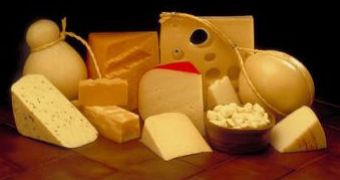Only yesterday, the scientific journal Nature witnessed the publication of a new study stating that, although present society pretty much tended to take cheese for granted, this dairy product played a not-to-be-ignored part in the evolution of Europeans.
After stumbling upon several ancient milk residues on sieve fragments unearthed in Kuyavia, Poland, specialists reached the conclusion that cheese first began being produced roughly 7,500 years ago.
“The presence of abundant milk fat in these specialized vessels, comparable in form to modern cheese strainers, provides compelling evidence for the vessels having being used to separate fat-rich milk curds from the lactose-containing whey,” the researchers explain.
Granted, it is quite unlikely that our forefathers ever went through the trouble of mixing and matching various types of milk to get cheeses “sporting” peculiar and/or enticing flavors, yet the fact remains that their making cheese translated into the human race's bypassing its inherited lactose intolerance.
For those unaware, like most other animals, the human adult has a digestive system designed to process meat, fruits and vegetables, but not milk, which is destined for infants first and foremost.
This is why, even during these times, there are a lot of people who find that their drinking milk negatively impacts on their health.
However, cheese packs significantly lower amounts of lactose than milk does, which is why is can be eaten without an individual's ever experiencing any side effects.
“The introduction of dairying was a critical step in early agriculture, with milk products being rapidly adopted as a major component of the diets of prehistoric farmers and pottery-using late hunter-gatherers,” reads the article preview to this study.
Furthermore, “The processing of milk, particularly the production of cheese, would have been a critical development because it not only allowed the preservation of milk products in a non-perishable and transportable form, but also it made milk a more digestible commodity for early prehistoric farmers.”

 14 DAY TRIAL //
14 DAY TRIAL //